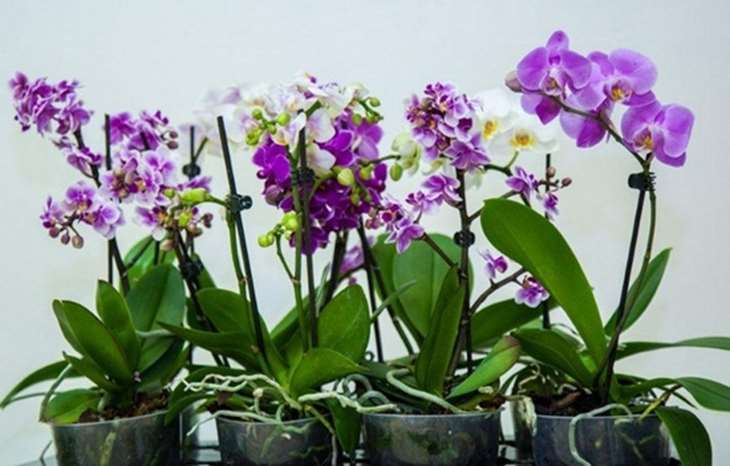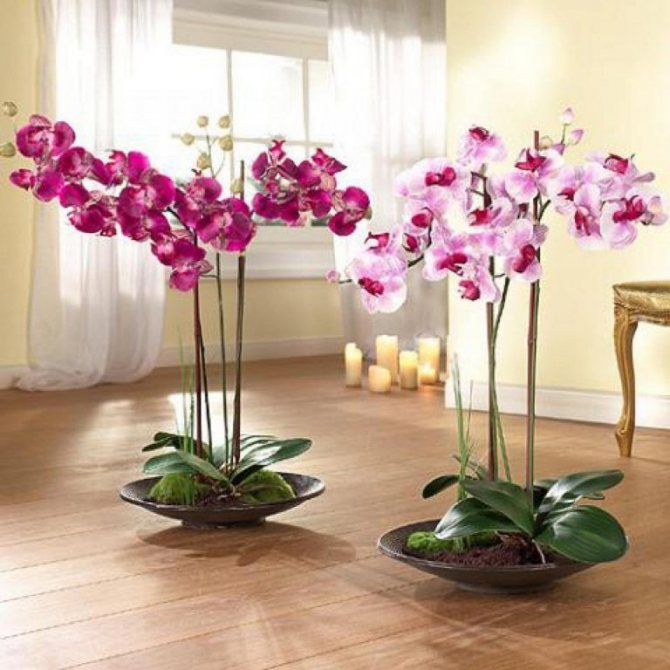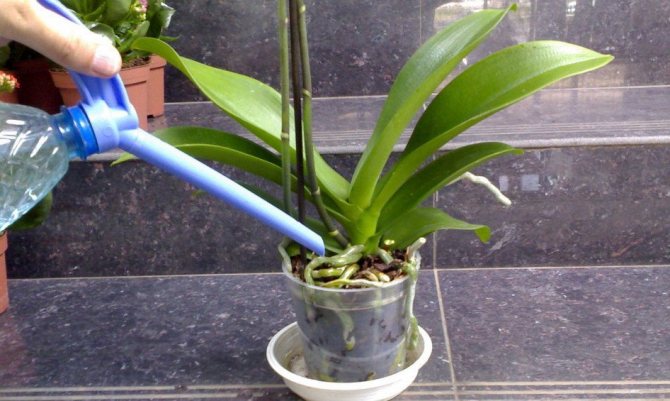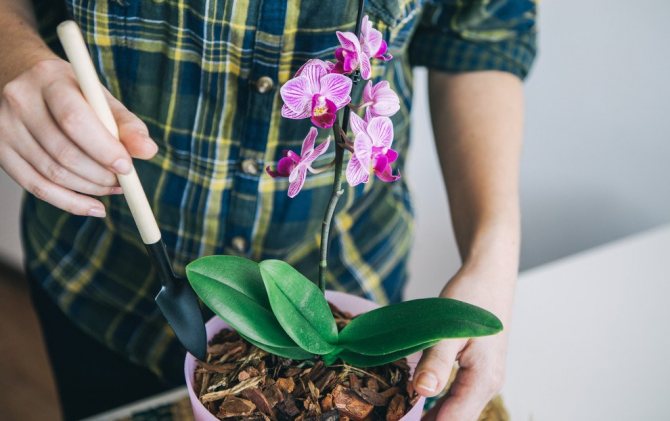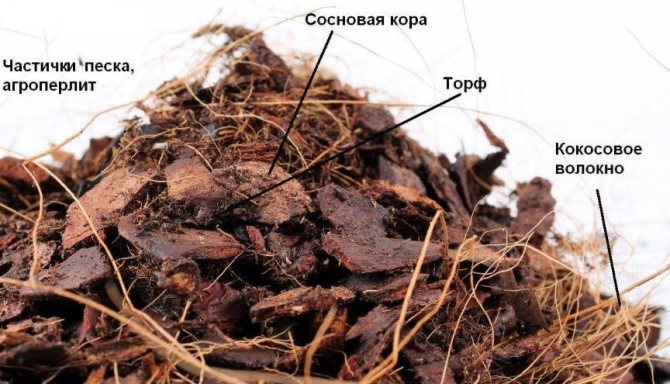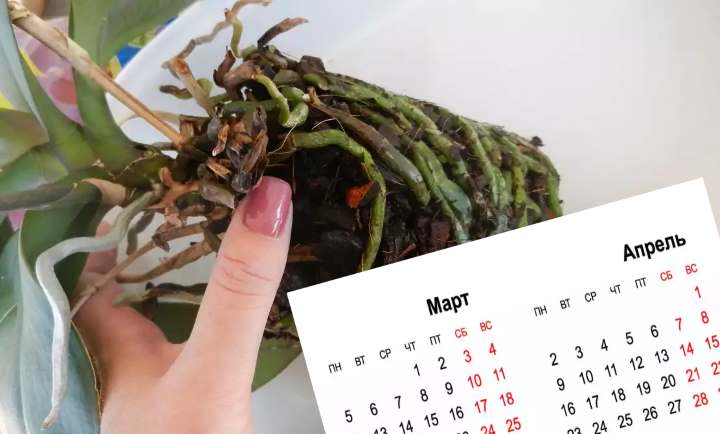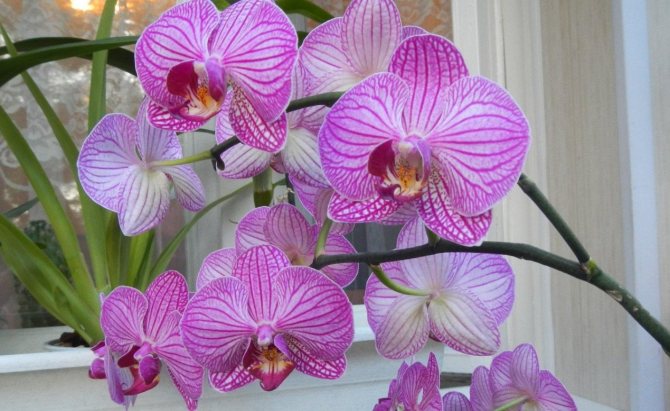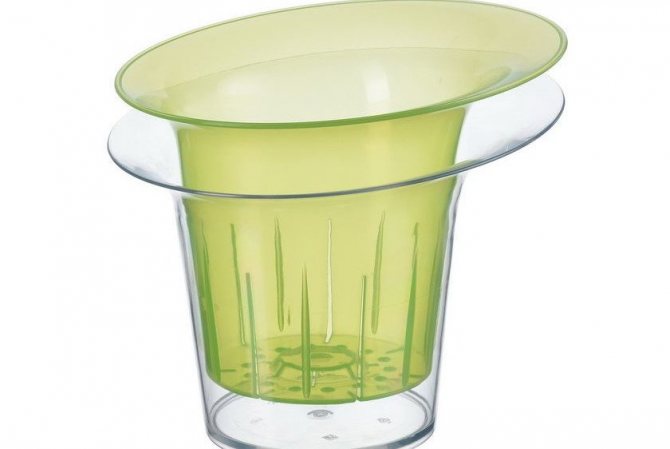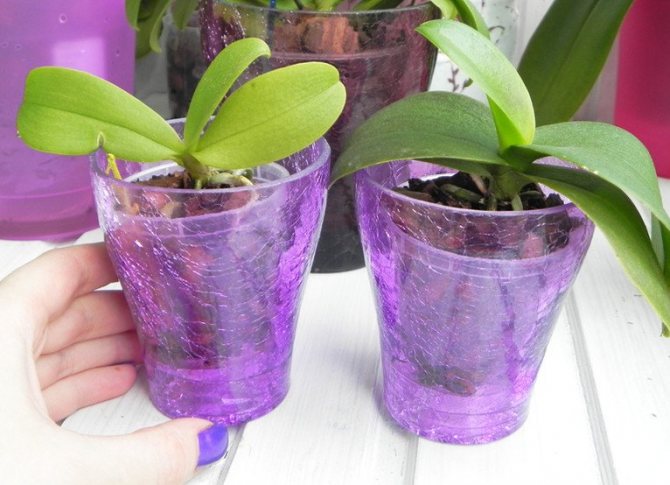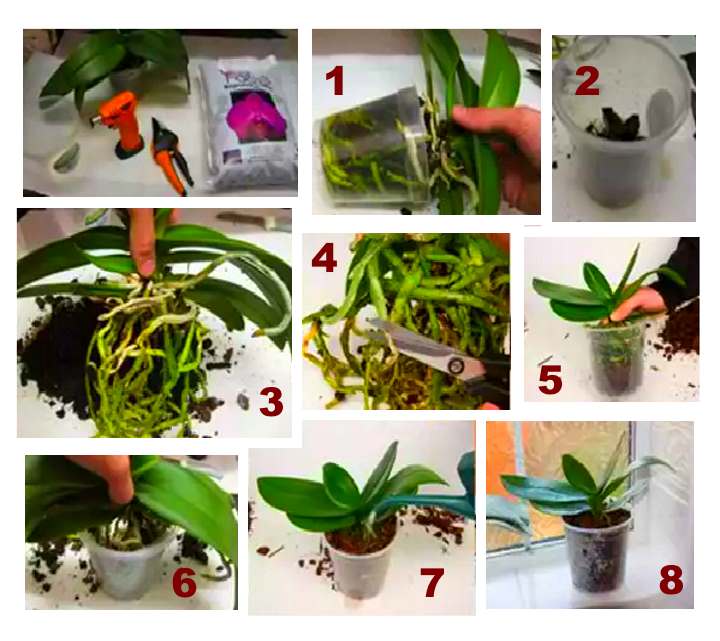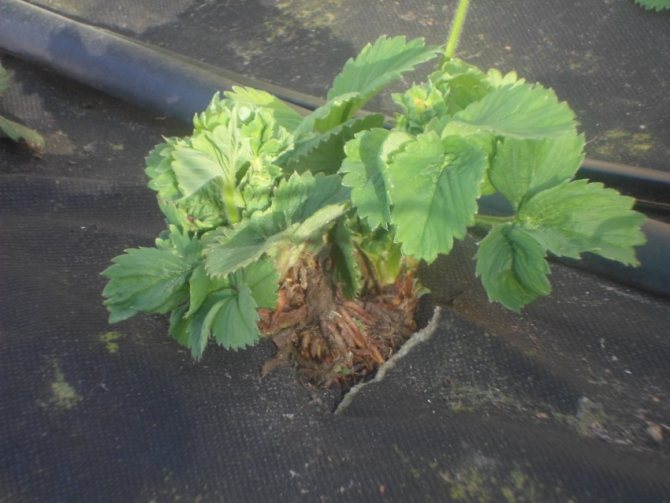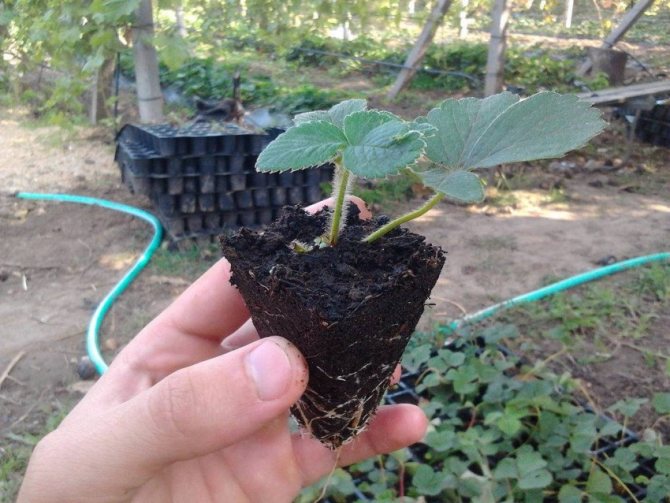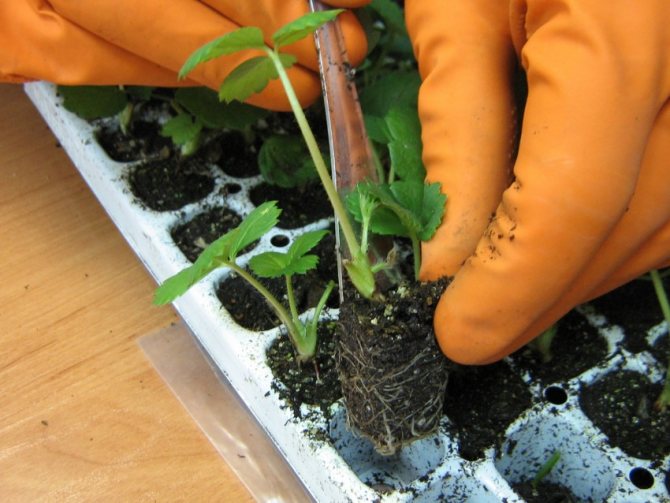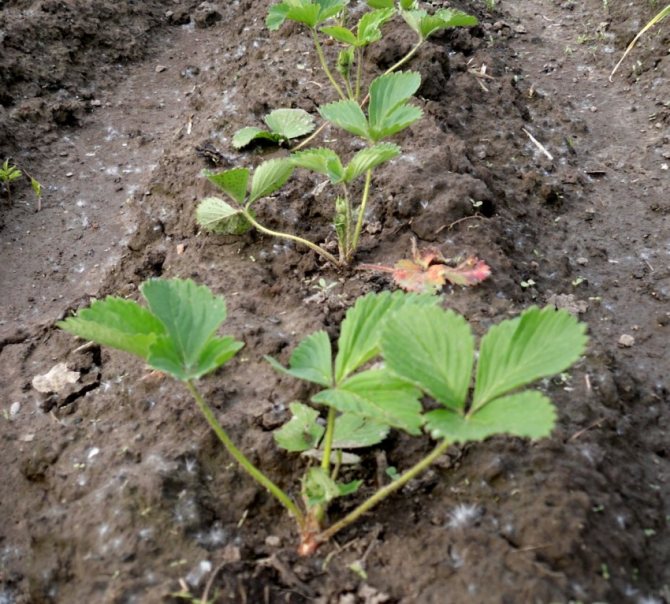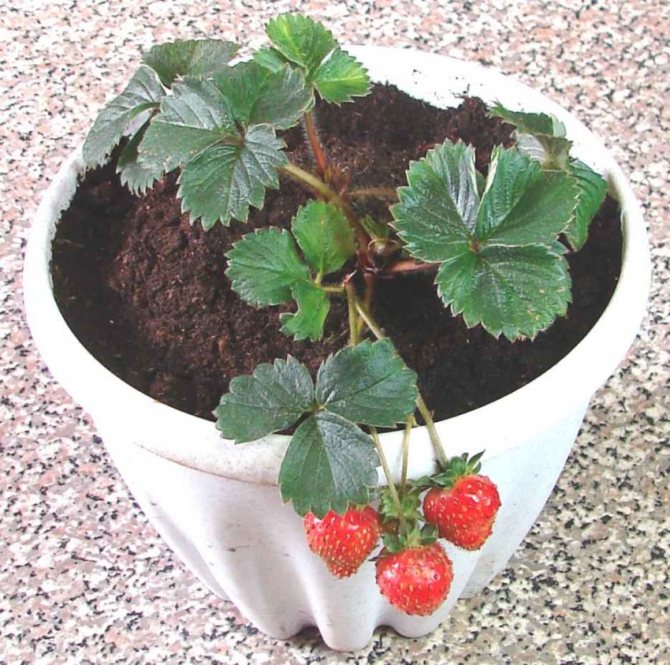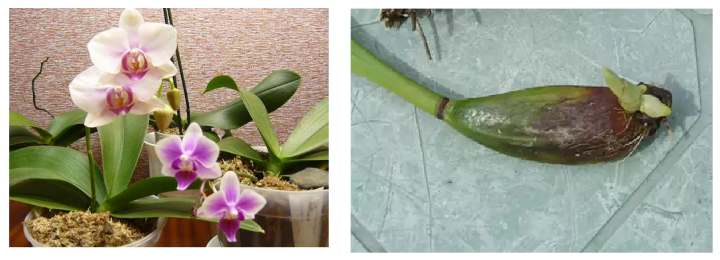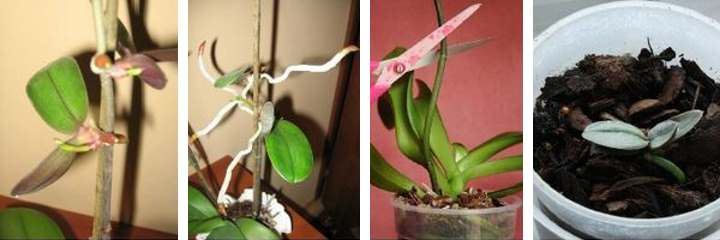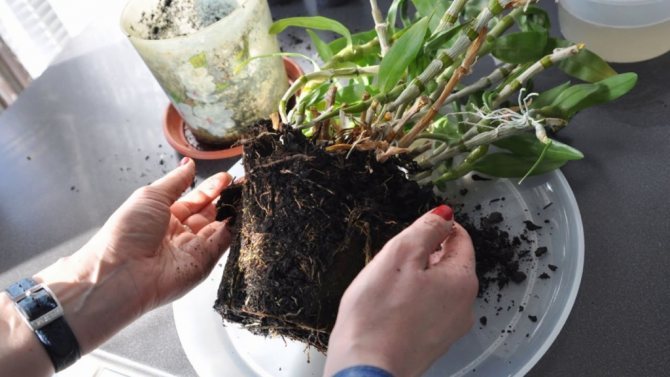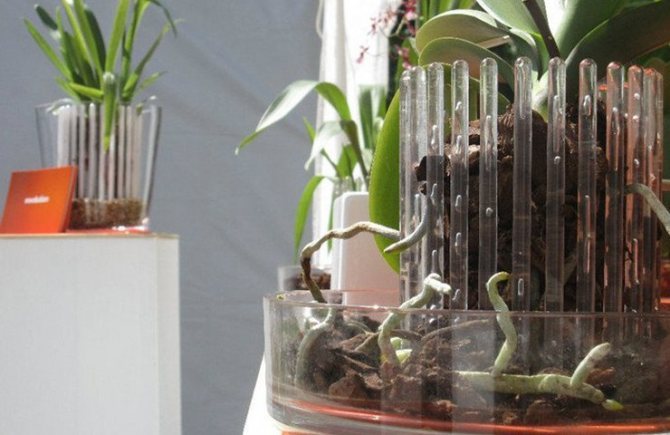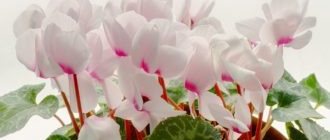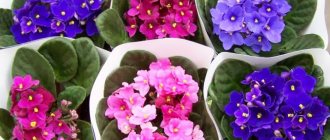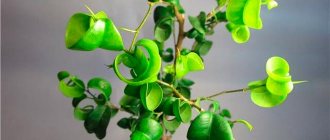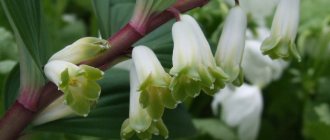It is important to properly plant the orchid in a pot so that it pleases with abundant flowering. It is necessary to use loose mixtures, create favorable conditions, otherwise the plant will get sick and die. Optimum flower development in one substrate is limited to three years.
Then the orchid needs to be transplanted into another pot and potting soil.
How to organize the landing correctly?
There are two planting methods, and every florist can choose the right one for himself, depending on what conditions for the plant can be created. To begin with, we will consider the methods and determine the optimal one for ourselves, based on the conditions:
- planting in a pot with a substrate;
- landing on the block.
Sometimes it is not possible to choose the planting method on your own, since this is determined by the plant variety. Regardless of the method, the basics of planting remain the same.
If you bought a flower from a store, it is not recommended to touch it for three weeks - the plant must first adapt to the new conditions.
Dividing the bush
This method of reproduction or seating is characteristic mainly for sympoidal species:
- Dendrobiums;
- Cymbidiums;
- Miltonius;
- Cattley;
- Odontoglossums;
- Oncidiums.

Not all orchids reproduce by dividing the bushes.
You can see in the photo how to plant orchids by dividing the bushes. This is due to the fact that the sympoidal types have more than one point of growth, which allows them to propagate by dividing the rhizome (bush).
Technology
The plant is removed from the container, soaked for half an hour and cleaned of old soil. Then, with a sharp disinfected tool, the rhizome is divided in such a way that on each part there were at least 3 pseudobulbs left... The cut sites are processed, dried and planted in new "apartments" with a new substrate.
What can you grow a flower in?
What can you plant an orchid in at home? Before planting a plant in a pot, it is worth knowing the features of the orchid's root system, it grows horizontally and superficially.
In a pot
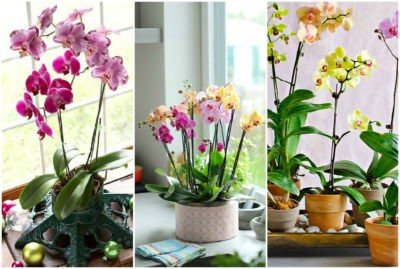

Consider in which pot it is better to plant an exotic orchid at home. The container for the plant must be transparent... This is necessary not only for the plant, but also for the housewives. As you know, the orchid does not tolerate frequent transplants, and through the transparent walls you can monitor the state of the root system.
The pot must be chosen correctly, it should not be too small - the substrate will dry out quickly in it. In large, there may be stagnation of moisture, from which the roots of the plant can be affected by rot.
The substrate is very difficult to prepare on your own., especially in urban conditions, so it is better to buy a ready-made and properly balanced composition in a store. Good drainage should be laid at the bottom, which should take up a third of the container. You can use perlite, pebbles, polystyrene, pine bark.
Now it is worth preparing a special wooden stick that will serve as a support for the flower. Use a soft thread to secure the roots around the support. This must be done with extreme care so as not to damage the fragile roots.Dip the roots into the pot and fill it with a substrate that cannot be tamped down, the roots of the orchid must breathe.
In the snag
In nature, the orchid grows on trees, therefore planting on a snag is creating natural conditions for a flower... Is it possible for a beginner to carry out such a landing at home on his own? Yes, it is enough to simply fix the plant on a large piece of bark, such as pine bark, but you can use any hardwood. The basic rule is that the tree should not contain a lot of resin.
To exclude damage to the delicate roots, they are neatly fixed to the bark with a soft cloth, as when planting in a flowerpot. The size of the driftwood is selected individually for each plant based on the root system.
Between the driftwood and the rhizome, it is worth laying sphagnum moss... Quite a little time will pass, and the orchid will begin to twine its roots around the snag itself.
But when growing in this way, you need to take into account one caveat - the roots will dry out very much after watering. In natural, tropical conditions, the orchid receives most of its moisture from the air.
It is difficult to create such humidity in an apartment. therefore if you want to grow an orchid on a snag, then equip a kind of florarium or a greenhouse.
Some growers prefer to grow orchids in a flask, others in water, and still others choose a closed planting system.
Reproduction methods
There are several working ways to propagate these exotic plants that are worth considering in detail.
Seeds
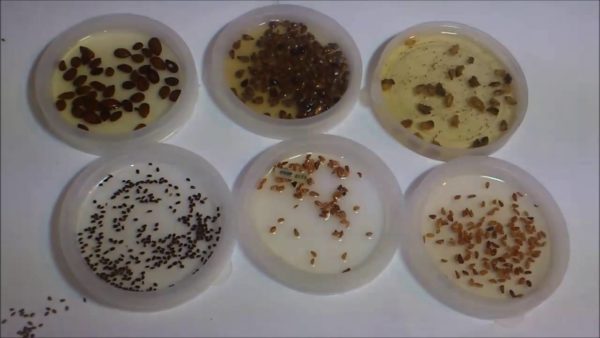

This planting method is very difficult and time consuming, in addition to this, germination is quite long. Seed planting is used, only true lovers of this plant.
Seeds similar to dust do not have a supply of substances that would nourish the seedling for the first time, and they can only germinate if they are 100% sterile. The seeds are placed in a nutrient mixture made of agar-agar. You can buy it at the store.
It will take a year for the appearance of real seedlings that can be transplanted into the substrate. therefore this method is used only in nurseries for plant breeding.
If the plant is grown on an industrial scale, then each nursery has laboratories for growing seedlings from seeds.
Before being placed in the nutrient mixture, the seeds are sterilized in a lime solution... Changes begin to appear after 7 days. small green balls with small sucking hairs begin to appear in the mixture.
After a while, leaves begin to form. The seedlings will be ready for planting in a pot in a year.
Bulbs
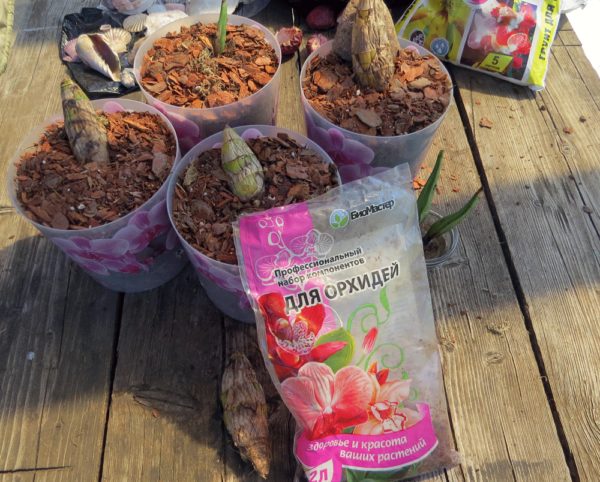

There are two ways to plant orchid bulbs, which are used by many experienced florists.
- Place the onion on a light windowsill at room temperature without substrate. The first hair-like roots will appear in 3-4 weeks. In this case, you do not need to water or spray it. After that, you can plant the flower in the substrate.
- Take a plastic cup in which holes are pierced from all sides. Fill the container with damp moss and place the onion in it, overlapping it with the composition on all sides.
Until the bulb wakes up, it is unnecessary to water it abundantly, otherwise it may simply rot without giving the desired result.
Children


The appearance of children on the plant occurs together with flowering, it can appear from a dormant bud or directly on the peduncle. The air temperature at which the babies appear should be +28 degrees, in addition, it is worth creating conditions for high air humidity. There are some phalaenopsis hybrids that can form babies even under less severe conditions.
There is a special cytokinin paste with which you can stimulate the appearance of children. This drug, with the help of hormones, awakens dormant kidneys, but only before applying the paste from the kidney, you need to remove the protective scales.
The baby stays on the mother plant for about 6 months, for building up the root system. As soon as strong roots and 3-4 leaves appear on a small plant, it can be cut off with a sharp knife along with the peduncle. Treat the sections with ash or crushed activated carbon. After that, the baby is placed in a separate, small pot.
Features of cuttings
Reproduction of orchids more laborious by cuttings, a method that takes a lot of time, but with a successful coincidence of circumstances and the correctness of the process, it is effective. This method is especially suitable for monopoidal, rapidly growing orchid species such as Wanda, Dendrobium and others. But sympodial orchids can also be propagated by cuttings.
Important! The orchid should completely bloom.
Lateral shoots are cut into cuttings, 6-10 cm long, so that each one has at least 2 - 3 sleeping buds... The cut sites are treated with activated carbon and allowed to dry for up to 5 hours.
Then the prepared cuttings are laid horizontally on a nutritious substrate (moistened sphagnum moss) and remain in this position in greenhouse conditions. before root formation.
After the formation of at least 5 roots of sufficient size, the cutting can be planted in the substrate in an upright position.
When grafting a faded peduncle, the procedure is the same, except that the cuttings are cut in lengths from 10 to 15 cm.
Special attention when rooting cuttings should be given:
- Soil moisture;
- Temperature (23-25 ° C);
- And good lighting without direct sunlight.
Where to buy planting material?
Can I buy from websites? At the moment, the Internet is replete with a variety of online stores that offer to buy not only seeds, but also plant seedlings.
China
On Chinese sites, you can order seeds, bulbs, cuttings and seedlings orchids, with free shipping. In some cities there are specialty shops for Chinese goods, where you can find this plant.
If someone you know is going to China on vacation, then you can order plant seedlings. An orchid will tolerate transportation well if it has at least a minimum of light.
Vietnam
If you want to grow an orchid from Vietnam, you can order bulbs in a specialized online store... It is worth warning right away that you need to order 30 percent more than you plan to grow plants, since some specimens may dry out during delivery.
Vietnamese, bulbous orchids are much larger than those that we are used to seeing on the shelves of flower shops. They are extraordinarily beautiful and spectacular.
Thailand


In Thailand, the cultivation of orchids from seeds is put on stream... In numerous stores, you can see on the shelves a huge number of cones with a nutritional composition in which Thai orchids are already ready for planting.
But you cannot order such containers by mail, since they will die during delivery without light. If you only ask someone to bring them in hand luggage.
As for seeds, bulbs or cuttings, you can order them on a special resource. True, no one will give you a guarantee that the exact variety of plant that you liked will come.
Other places
The algorithm of actions does not differ from the above. You can buy an orchid in the online store.
Do not discount specialized orchid nurseries, which can be found in any exotic species, while already rooted.
There are many benefits to this purchase, as experienced sellers will give you detailed instructions on how to grow the plant and provide it with proper care.
Difficulties and problems
Most often, difficulties arise when planting orchid seeds., since they need to be grown strictly under sterile conditions and in a nutrient composition, which is quite difficult to prepare on your own.
Problems that may arise when landing in other ways:
- Bulb, planted in the moss does not wake up - it is possible that the planting material has rotted from waterlogging. This can be checked by cutting off a little of the protective layer. The smell should be fresh, similar to cucumber.
- Kids... The root system does not develop well in children. The reason may be dry air - it is enough to spray the plant several times a day.
- Seeds do not germinate in the nutrient composition. in this case, there may be several reasons: the seeds are not viable, the composition is not prepared correctly, and sterility is not observed.
Indications for orchid transplant
The need for a transplant may arise in the following cases:
- orchid growth,
- impoverished soil.
The orchid has grown from its pot
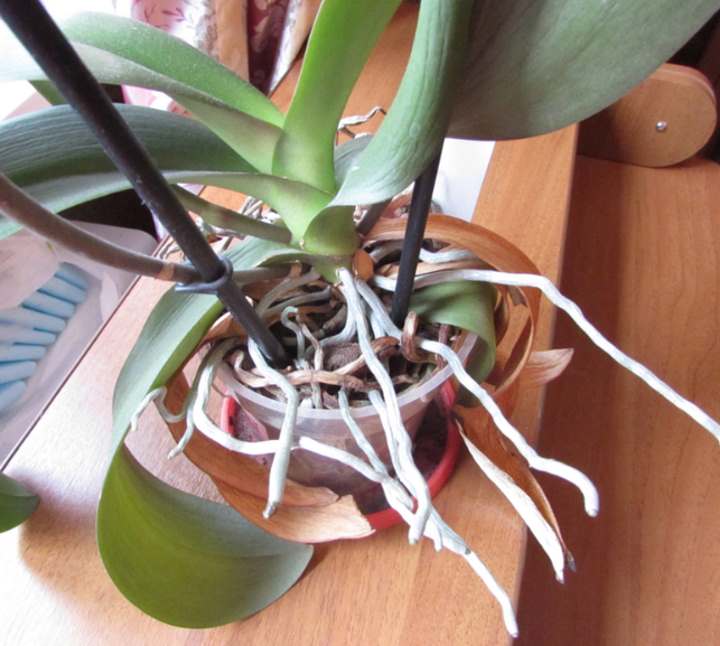

During development, not only flowers grow, but also the root system.
The roots can fill the space in which the flower is planted so that they begin to displace the earth itself, and the small roots can get tangled with each other, which will negatively affect the growth of the flower in general.
It's time to notice the ground
The soil in which the orchid grows, with prolonged use, no nutrients remain in the soil, which leads to the weakening of the plant.
A soil change is recommended every 2-3 years.
Care
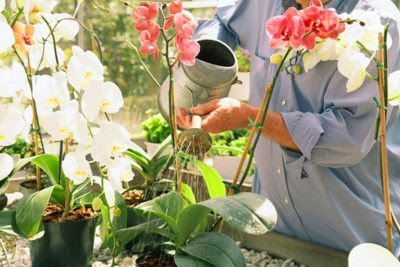

It should be noted that no specific care after transplantation is required, but it is worth doing the following:
- For 10 days, organize shading, especially the upper part.
- Watering is carried out immediately after transplanting with boiled and cooled water to which potassium, magnesium and nitrogen are added.
- Re-watering is carried out after 2 weeks.
- You need to feed the plant every 21 days.
Proper watering of the orchid is to lower the pot with the plant in water for 15-20 minutes, this time will be quite enough for the plant to receive a sufficient amount of moisture. Then take the pots out of the water and place them in their usual place.
Optimal conditions
After planting, the orchid is kept for 3-4 days without watering - this makes it easier for the plant to endure stress. The flower is protected from direct sunlight. A comfortable temperature for a plant at this time is considered to be 20-23 ° C.
The bush needs provide good lighting... West and east windows work best.
On the southern windows, the bright rays of the sun have a negative effect on the orchid - they can cause burns or pigmentation.
By the state of the plant, you can understand: is it comfortable in the chosen place, or you need to make adjustments.
A plant under poor lighting loses its juicy color. The leaves become narrow, faded, twisted. They turn and stretch towards the light. When it is impossible to provide the flower with good lighting, phytolamp illumination can be used.
Helpful hints:
- It is important to provide the orchid with a comfortable atmosphere, to prevent drafts and cold air.
- In winter, it is recommended to remove the flower from the window sill deep into the room; its leaves can freeze from contact with cold glass.
- Dry air from heating devices can affect the flower destructively, provoke the appearance of parasites. It is necessary to create optimal humidity and spray the orchid more often.


